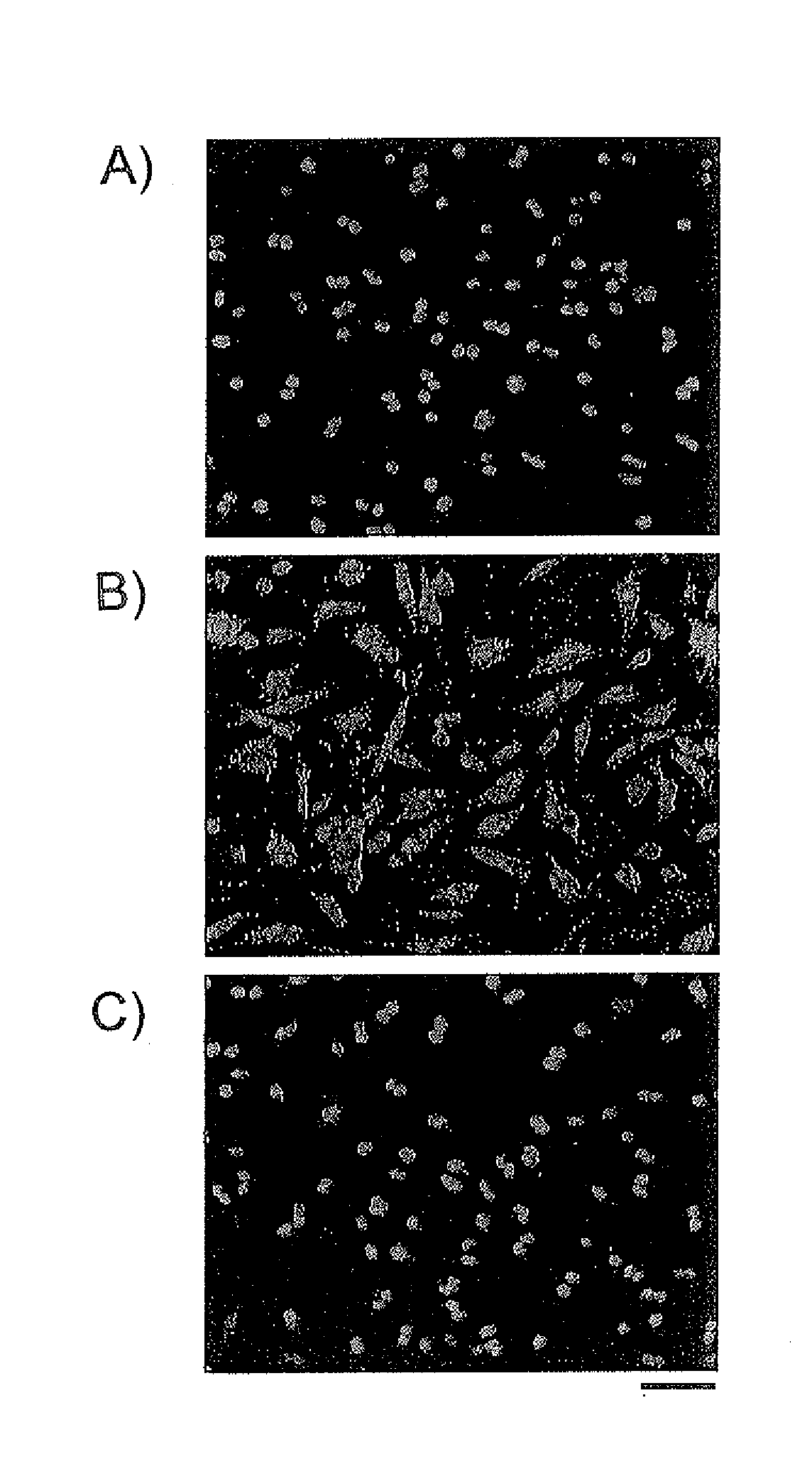Sustained-release nanoparticle containing low-molecular-weight drug with negatively charged group
- Summary
- Abstract
- Description
- Claims
- Application Information
AI Technical Summary
Benefits of technology
Problems solved by technology
Method used
Image
Examples
example 1
Synthesis of Poly DL-Lactic Acid-Polyethylene Glycol Copolymer (PDLLA-PEG)
[0076]40 g of methoxy-PEG (Mw 5200, manufactured by NOF Corporation), 40 g of D,L-lactide (manufactured by Purac), tin octylate (400 mg) were placed in a two-neck round-bottom flask and thoroughly mixed. The mixture was degassed by a hydraulic pump and was then heated in an oil bath at 110° C. to dissolve the mixture. Once dissolved, the temperature was raised to 155° C. and the reaction was carried out for 4 hours. Subsequently, the reaction product (solid) was cooled and dissolved in approx. 250 mL of dichloromethane. The solution was then precipitated for purification by slowly adding it to 2.5 L of ice-cooled isopropanol and the precipitate was freeze-dried to obtain poly DL-lactic acid-polyethylene glycol block copolymer (PDLLA-PEG). The product was evaluated by gel permeation chromatography (GPC) or proton NMR.
[0077]The results of GPC analysis indicated an increase in the molecular weight as compared to ...
example 2
Production of Nanoparticles Formed of PLLA and PDLLA-Peg and Encapsulating Prostaglandin E1 (PGE1)
[0079]A predetermined amount of PLLA (manufactured by Taki Chemical Co., Ltd.) was weighed and dissolved in 225 μL of dioxane. A predetermined amount of PDLLA-PEG synthesized in Example 1 was also weighed and dissolved in 175 μL of acetone and the solution was mixed with the dioxane solution. To this mixture, 5 mg PGE1 dissolved in 250 μL of acetone was added, followed by a predetermined amount of diethanolamine dissolved in 100 μL of acetone. A predetermined amount of a 500 mM anhydrous ferric chloride solution in acetone was immediately added and the mixture was thoroughly mixed. The mixture was then left at room temperature for 10 minutes. To 25 mL of water placed in a 50 mL sample vial and being stirred with a 2 cm stirrer bar, the reaction mixture was slowly added dropwise using a 3 mL syringe fitted with a 26G injection needle (stirrer rotation speed=1000 rpm, injection needle=26G...
example 3
Sustained Release of Nanoparticles Formed of PLLA and PDLLA-PEG and Encapsulating Prostaglandin E1 (PGE1)
[0087]Nanoparticles formed of PLLA and PDLLA-PEG and encapsulating PGE1 (referred to as PLLA particles) were prepared in the same manner as in Example 2, except that 5 mg of PGE1, 13 mg of PLLA, 12 mg of PDLLA-PEG, 4.7 mg of diethanolamine and 7.5 μmol of ferric chloride were used.
[0088]As a control, nanoparticles formed of PDLLA and PDLLA-PEG and encapsulating PGE1 (referred to as PDLLA particles) were prepared by using poly DL-lactic acid (PDLLA), the DL-form, in place of PLLA.
[0089]The PLLA particles or the PDLLA particles so obtained were dispersed in an equal mixture of phosphate buffered saline and bovine serum and were incubated at 37° C. As a measure of the sustained release properties of both particles, the amount of PGE1 remaining in the particles were determined by HPLC over time.
[0090]The results are shown in Table 4.
Table 4: Release from PGE1 Nanoparticles (Sustained...
PUM
| Property | Measurement | Unit |
|---|---|---|
| Particle size | aaaaa | aaaaa |
| Particle size | aaaaa | aaaaa |
| Weight | aaaaa | aaaaa |
Abstract
Description
Claims
Application Information
 Login to View More
Login to View More - R&D
- Intellectual Property
- Life Sciences
- Materials
- Tech Scout
- Unparalleled Data Quality
- Higher Quality Content
- 60% Fewer Hallucinations
Browse by: Latest US Patents, China's latest patents, Technical Efficacy Thesaurus, Application Domain, Technology Topic, Popular Technical Reports.
© 2025 PatSnap. All rights reserved.Legal|Privacy policy|Modern Slavery Act Transparency Statement|Sitemap|About US| Contact US: help@patsnap.com

